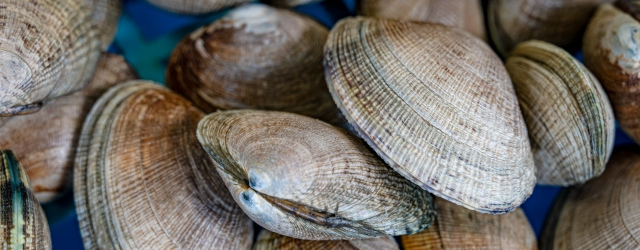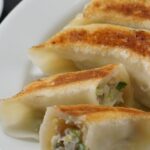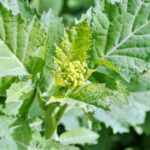
Food Labeling Standards Q&A was revised on June 15, 2022, and “The guidelines for the legal product names of seafood” was revised. The revision was made in response to changes in the situation surrounding names of seafood, such as the expansion of the import and distribution of new fish species and the change of names due to the development of taxonomic research. Among seafoods, the revision was made for fish in 2020, but this time it is for crustaceans.
In addition, the March 30, 2022 revision included a new Q&A and accompanying revisions to the labeling of place of origin of seafood products (especially shellfish), which we will take up here. This article will focus on shellfish (mainly short-neck clams), and we hope that it will provide you with an opportunity to learn about the regulations for seafood products, which differ from those for agricultural products and livestock products in terms of place of origin.
Background of the revision
Food Labeling Standards Q&A (Fresh – 27) summarizes the current labeling method and concept of places of origin labeling for seafood products (especially shellfish), as well as the history of the revision leading to it. We will mainly explain the background.
1 The place of origin of fresh foods is, in principle, the place where agricultural, livestock and seafood products are produced (including harvested and caught). However, for farmed seafood products, the basic concept of place of origin labeling is that if the product was raised in multiple locations, the location with the longest growing period must be labeled as the place of origin.
2-3 (omitted)
4 This concept has been taken over since JAS Act prior to the revision by Food Labeling Act. However, in April 2005, inappropriate cases such as mislabeling of the place of origin of short-neck clams among shellfish, in particular, were confirmed. In the case where the period of growth before harvesting in a foreign country is clearly longer than the period of growth in Japan, even if imported short-neck clams are stocked in Japan for two or three months, it has been kept informed that they must be properly labeled according to the basic concept of origin labeling, the country of origin must be indicated as the country where the product was harvested before import.
5 In addition, in March 2010, the government published the “Q&A on Food Labeling,” which is the predecessor of Food Labeling Standards Q&A, stating that in the case of importing young short-neck clams or transplanting ones from other area in Japan to propagate and then harvesting the adult short-neck clams, the place of origin with the longest stocking period for the clams must be indicated and it is necessary to be able to prove that the clams have been stocked at that location for a long period of time.
6 However, it is difficult to accurately grasp the growth period of imported short-neck clams by their external appearance. Furthermore, a number of cases were identified in which the origin was labeled as the domestic place (Japan) of origin, based on the provided untruthful certifications stating that the domestic growing period (in Japan) was longer than the overseas growing period.
7 Therefore, in March 2022, in order to promote proper understanding of the concept of origin labeling, the following regulations were introduced
① The term “stocking” is defined as the short-term storage of aquatic animals and plants in a certain location for shipment adjustment and other purposes, and the period of “stocking” is not included in the overall growing period of shellfish.
② The country of origin of imported short-neck clams is an exporting country of the clams regardless of presence or absence of their stocking periods. As an exception, if imported young short-neck clams are raised (farmed) for more than one and a half years (*) based on a demarcated fishing right and the documentation related to cultivation, etc. is preserved, the domestic raised site (in Japan) can be indicated as the place of origin.
(*)This period is set based on the assumption that it takes approximately three years to harvest them. This is because it is difficult to confirm the growth period of imported short-neck clams.
③ When introducing young short-neck clams from other areas of Japan, indication is needed that it is necessary to preserve supporting documents of such young short-neck clams in order to distinguish them from imported adult short-neck clams to be released. Food Labeling Standards Q&A, was revised for the above three points.
Documents with evidence
(Fresh – 27) As mentioned in 7②, documents with evidence (documents that can explain the basis for labeling at the request of administrative bodies, etc.) that must be preserved when young short-neck clams are raised for more than one year and a half based on a demarcated fishing right and labeled as originating from a domestic raised site (in Japan), is described in (Fresh – 34) 3.
3 As for documents importers and domestic (Japanese) manufacturers preserve
① As documents with evidence for imported short-neck clams
(a) Documents related to customs clearance of imported short-neck clams (notice of import permission, CERTIFICATE OF ORIGIN and other documents related to customs clearance)
(b) In the case of subdividing imported young short-neck clams into small packages, a document to match the short-neck clams actually introduced into the fishing ground with the certificate of customs clearance (number management shall be controlled on a lot basis, and even after subdividing, it is necessary to take measures such as assigning numbers to the clams after subdividing).
In addition to the above
② As documents with evidence for domestic (Japan) raising :
(a) Documents that can confirm the use of fishing grounds in the area licensed for demarcated fishing rights (e.g., fishing ground map, farming zone map, farming zone numbers, area, etc.)
(b) Detailed statement of carrying in/out of young short-neck clams (documents submitted to customs : records of carrying in/out of each farming zone)
(c) Records of the date and quantity of short-neck clams introduced into the fishing ground for each farming zone
(d) Records of the harvesting date and quantity of short-neck clams from the fishing ground for each farming zone
(e) Certificate of registration of the demarcated fishery right (If the fishery cooperative has obtained a license of the demarcated fishery right, it is necessary to confirm separately whether the person who raises the fish can exercise the demarcated fishery right.)And so on.
In addition, please refer to (Fresh -35) for documents with evidence of young short-neck clams in (Fresh-27) 7 (3).
This revision related to “The guidelines for the legal product names of seafood” and the concept of place of origin of seafood products would be helpful not only for those who handle fresh seafoods, but anyone who uses seafoods as ingredients in their products.
References
- The old and new comparison table of the 14th Revision (June 15, 2022) of Food Labeling Standards Q&A
- The old and new comparison table of the 13th Revision (March 30, 2022) of Food Labeling Standards Q&A
- Attached “The guidelines for the legal product names of seafood”
Share/Like/Follow:
Newsletter Signup
We issue monthly e-newsletters, which provide you with the latest updates on food labeling/regulations in Japan.
If you want to make sure to not miss any issue, please click below.
Related Service
Research Services on Ingredients & Food Labeling -For the Japanese Market-
We verify the conformity of ingredients and additives with the standards for use in Japan based on specifications such as formulation lists. We also verify the conformity of the proposed labeling of ingredient names, nutrients, etc. with the labeling standards based on specifications such as formulation lists.
Label bank Co., Ltd. Regulatory Review and Development
She is engaged in research work on ingredients and labeling drafts for food products distributed mainly in Japan, as well as consulting and lecturing at seminars on food labeling.






